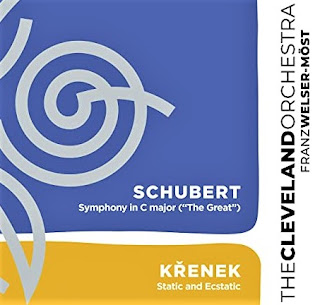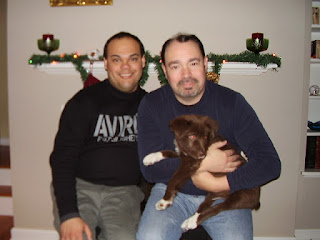There are years which linger in memory for all the wrong reasons. 1980, the year of my parents’ divorce and my abduction to California, is one. 2005 is another, for reasons I won’t enumerate here. In many ways, 2020 will eclipse them all. Certainly, 2020 was the most challenging year Americans have faced since 1968, with consequences even more devastating. For me, it was a year of personal disruption and concern for friends, for family, for nation, and for our world.
2020 marked
the passing of a member of my extended family, with other members of Dan’s and
my family facing profound medical challenges, which occupy a large portion of
our thoughts.
But for me
the most personally devastating event of 2020 was the death of my dog Mason.
At the beginning of 2020, he seemed healthy and vigorous, and I hoped he
might make it to the age of 15. But he
began to slow down in the spring and deteriorated further in the summer – dying
just short of his 12th birthday.
I still think of Mason every day, feel a pang in my gut from missing
him. Daniel and I have considered
getting another dog (or two) but have decided to hold off until the pandemic is
under control and life returns to relative normal. With me working at home full time, a sudden
return to onsite work might be distressing for a dog.
Just as
there are those who shared with their grandchildren their experience of combat
in World War II, or where they were when President Kennedy was assassinated, or
how they watched the first moon landing, there are those today who will tell
younger generations of how we sheltered in our homes, avoided restaurants except
for take-out, and wore masks during the year of COVID-19. And we will tell tales of the
willfully ignorant who laughed at the very real threat COVID poised, refused to
wear masks, making asses of themselves while bringing danger to themselves and
others – and how a number of them faced a fatal comeuppance. Those fools will go down in history alongside
those who protested against school integration and civil rights. Those who lost loved ones to COVID – without
even being able to properly say “goodbye” – will have the most poignant stories
of all. And we will, hopefully, remember
and speak of the lessons we learned at a frightful cost: Listen to the
scientists, not the political propagandists.
Put the needs of your community above your own convenience.
Working
from home, which will likely continue for me until summer 2021, has been a
mixed bag. On the plus side, not having
to commute to work gives me back about an hour of my day and saves the cost of
commuting and buying lunch (I’m too lazy to brown bag it). On the other hand, my home utility bills have
increased due to additional usage. Most
of all, I miss my work friends.
The
pandemic has created ripples that extend far beyond the sick and dying. Public events from concerts to sports were cancelled or moved online. Who among us will forget the bizarre
experience of watching baseball players in an empty stadium, with a cardboard
cutout crowd and recorded cheers? After
over a century, the art form of cinema is likely near an end – at least as far
as groups of strangers purchasing tickets and overpriced food to crowd into a
closed room with often sticky floors and stare at a screen. I’ve enjoyed the shared experience of movie
theatres since I was a child, but the writing has been on the wall for a decade
and is now crystal clear: streaming is replacing movie theatres. I am hopeful this will not be the case for
live performances, which are ephemeral and can’t be fully captured by a screen
of any size or home speakers of even the finest quality. That hope is backed up by the fact that
whenever Daniel and I have gone to Severance Hall and especially Playhouse
Square, the house has been well filled – which was rarely the case with cinema
before the pandemic.
We will
also likely tell subsequent generations about the anxious, fraught week
following the November election – undoubtedly the most consequential our nation
has faced since 1940 – and the weeks of disinformation
emanating from Donald Trump and his enablers, their pathetic posturing, and
futile legal efforts to thwart the clear will of the American people.
The Trump
era has been a difficult one for Daniel and me, and we seriously considered
becoming expatriates should Trump get a second term. As it is, even with Trump’s defeat we have
reexamined our future priorities and relationship to my home state of Ohio. Most of my formative years were spent here,
and I returned age 27 after nine years in Massachusetts to care for my maternal grandmother after the death of my mother. But it’s clear to me that Ohio has changed over the past decades, and
not for the better. With each passing
year, it becomes less and less likely we will remain here past retirement and we
may leave even before then. I will miss Cleveland’s rich
cultural landscape,
but as my hearing continues to slowly deteriorate, will likely not derive as
much pleasure as I have from the Cleveland Orchestra or Playhouse Square over
the past decades. Nor is it likely we
will move to Florida, even though I have family there – unless that state’s
political landscape changes drastically for the better.
The above
opens a dilemma for me. Where to live my
last years? A blue oasis in a deep red
state is something I’ve experienced in Cleveland and likely would in Tampa. Many blue states, on the other hand, are
beyond my reach financially. A relative
of mine who is known neither for her wit nor her sagacity ranted that
“liberals” are why California is so expensive to live in. But the reality is that even in the most
left-wing locations, including the West Coast, capitalism drives the
market. More and more, New Mexico is
looking promising – there are suburbs of Santa Fe that are affordable, and the
city offers the kind of cultural amenities usually seen in much larger
metropolises.
For those
who believe I am obsessing over something that is over a decade away, planning
for the future has always been a way to help me navigate through a difficult
present.
Meanwhile,
I am using time alone to work on myself.
One such effort is to correct an issue that’s been unresolved since my
teenage years: my teeth. I never had
braces even though I needed them. In
November, I began the process of correcting the issue via aligners.
There has been some minor discomfort, but this is both expected and
manageable.
1968, a traumatic year, ended on a hopeful note with Apollo 8’s orbit of the moon, allowing humans their first opportunity to see their planet as one organism.
2020 is ending with vaccines against COVID-19
that appear to be over 90% affective, and the disintegration of the Trump
Administration, despite the disgraced soon to be ex-President’s attempts at a
coup. But the more things change, the
more they stay the same. It seems
inevitable that our societal divisions, driven by gun zealotry, religious fundamentalism, and Randian Objectivism, will continue.
I hope the
lessons of 2020 will not be forgotten.


















































